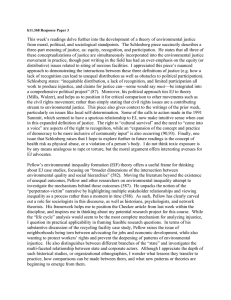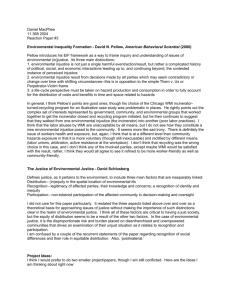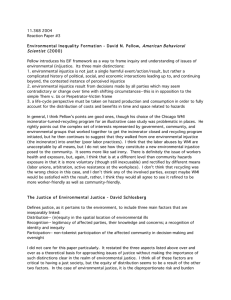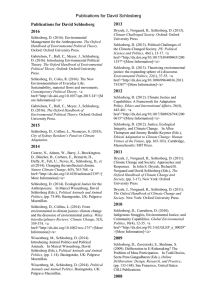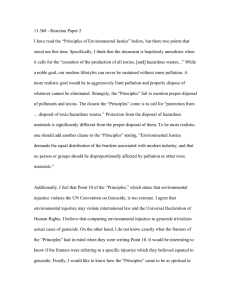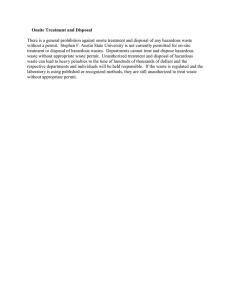11.368 - Reaction Paper 3
advertisement
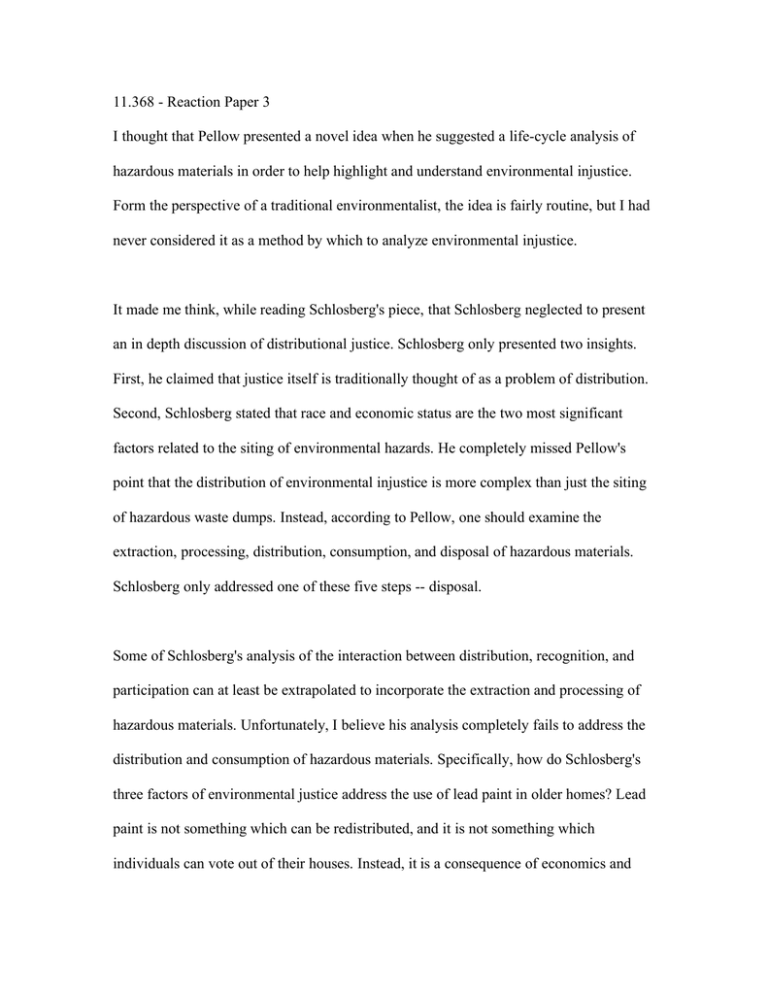
11.368 - Reaction Paper 3 I thought that Pellow presented a novel idea when he suggested a life-cycle analysis of hazardous materials in order to help highlight and understand environmental injustice. Form the perspective of a traditional environmentalist, the idea is fairly routine, but I had never considered it as a method by which to analyze environmental injustice. It made me think, while reading Schlosberg's piece, that Schlosberg neglected to present an in depth discussion of distributional justice. Schlosberg only presented two insights. First, he claimed that justice itself is traditionally thought of as a problem of distribution. Second, Schlosberg stated that race and economic status are the two most significant factors related to the siting of environmental hazards. He completely missed Pellow's point that the distribution of environmental injustice is more complex than just the siting of hazardous waste dumps. Instead, according to Pellow, one should examine the extraction, processing, distribution, consumption, and disposal of hazardous materials. Schlosberg only addressed one of these five steps -- disposal. Some of Schlosberg's analysis of the interaction between distribution, recognition, and participation can at least be extrapolated to incorporate the extraction and processing of hazardous materials. Unfortunately, I believe his analysis completely fails to address the distribution and consumption of hazardous materials. Specifically, how do Schlosberg's three factors of environmental justice address the use of lead paint in older homes? Lead paint is not something which can be redistributed, and it is not something which individuals can vote out of their houses. Instead, it is a consequence of economics and can only be rectified through economic change. Either the government must step in and pay for the removal of lead paint, or the residents of contaminated homes must become economically empowered enough to remove it themselves. In general, I agree with Schlosberg that societal recognition and participation are completely necessary to achieving environmental justice. Yet, Schlosberg uses too narrow of a definition of distribution for it to be applied to all types of environmental injustice. Environmental justice, as the Principles of Environmental Justice states, is also concerned with the responsible use of resources, limiting pollution production, and individual lifestyle choices. Even if Schlosberg's three conditions of environmental justice were fulfilled, one could not necessarily say that the environmental movement had been a success.
